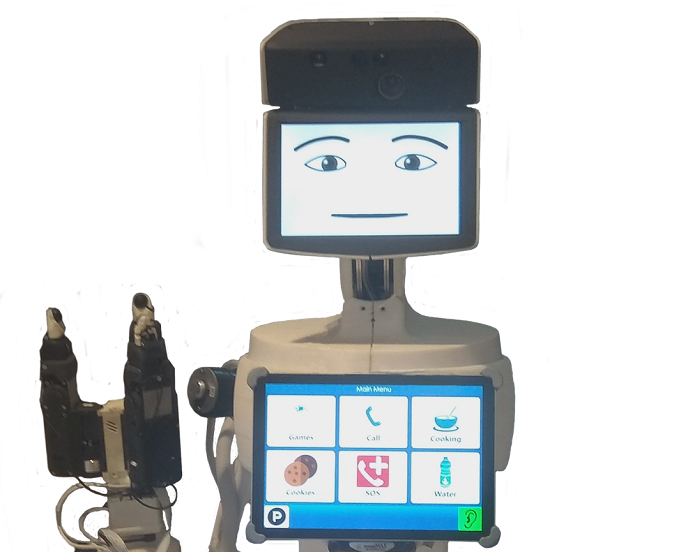Advanced robot provides assistance at home to older persons in need
The old-to-young population ratio in modern societies is increasing. This progressively hinders the capacity to provide proper care-giving services to older persons in their daily life at home. Service robots could help in this regard and share some responsibilities with human caregivers. The EU-funded RAMCIP(opens in new window) project researched and developed a new service robot to support the elderly with mild cognitive impairments and early Alzheimer’s disease in their daily activities at home. RAMCIP focused mainly on the “development of a robot with high-level cognitive functions that enable proactive and discreet robot behaviour,” says project coordinator Prof. Dimitrios Tzovaras. “The project developed the robot in order to support a series of use cases, including assistance provision for daily activities such as cooking, eating and medication, as well as securing safe handovers.” Project partners successfully tackled such key issues as the provision of proactive, discreet and optimal assistance to the user. To facilitate this, they implemented advanced communication channels between the user and the robot. They also applied state-of-the art means for physical interaction between the robot and the patient’s home environment. The robot’s high-level cognitive functions orchestrate a combination of advanced lower-level mechanisms. These enable the robot to communicate with the user, and to establish dexterous and safe manipulations. Recognising human action and behaviour patterns The researchers developed novel methods for unobtrusive human activity recognition. This was done to allow the robot to identify complex human actions and the behaviour of multiple persons in the user’s home. The resulting inferences help with the robot’s successful execution of daily activities like cooking and housekeeping, detecting crucial forgotten actions, and emergency cases such as falls. Patient-robot communication is based on touchscreen, speech and gestural modalities. The technology incorporates an augmented reality display and an underlying empathic communication channel. These innovations permit the robot to sense the effect on the user and to moderate it. Step-change in robotics for assisted living The robot is able to safely grasp a variety of objects in the home environment, ranging from very small items to dishes and cooking utensils. It interacts with home objects or appliances, such as doors, light switches and ovens. The robot can also fetch objects that can’t be reached by the user. The researchers demonstrated the robot at two major exhibitions in Europe after the project finished. Live demonstrations continue to take place. They are currently looking into ways to commercialise the service robot. “RAMCIP outcomes will stimulate robot users’ socialisation, positive outlook and cognitive training,” he explains. These aspects are considered important factors in facilitating the improvement of older individuals’ quality of life. “Thanks to the RAMCIP robot, patients with mild cognitive impairments or early Alzheimer’s disease will be able to live longer and more independently at their own homes,” concludes Prof. Tzovaras. “This will help to reduce their dependence on the human caregiver, time spent in hospitals and institutionalisation.”







